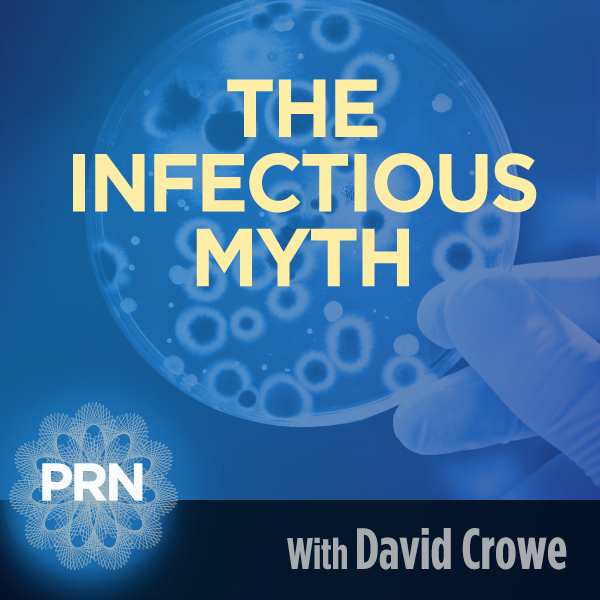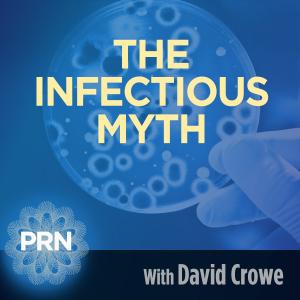
In this episode, David is joined by Elizabeth Ely his co-host on the podcast, "How Positive Are You?", and by Dr. Rodney Richards who has been involved with HIV testing since 1984. Back then his company, young biotech startup Amgen, worked with Abbott to help commercialize Robert Gallo's HIV ELISA antibody test.
April 23rd is sometimes called "AIDS Fraud Day" because it is the day that Margaret Heckler, head of the US Department of Health and Human Services introduced Robert Gallo as the man who had discovered the probable cause of AIDS. This was before any science had been published, and much of what was published was later discovered to be erroneous or fraudulent. Despite that the so-called HIV test from Robert Gallo or from others has been used to diagnose HIV infection in millions of people, convincing them that only the use of toxic antiretroviral medications can delay their progress to a slow and painful death.
Dr. Richards explains the science behind the ELISA test and also the Western Blot, usually used to confirm the initial test. Neither of them, he explains, are based on the gold standard of purifying HIV.
Recently, on April 11th, the CDC released a new surveillance definition of HIV infection that drastically dumbs down the definition of HIV infection. Although this is just a surveillance definition, the reality is that it will probably be used to diagnose people, as there is no widely accepted non-surveillance definition of HIV infection. Rather than sticking with the ELISA plus Western Blot as has been done since the 1980s, the CDC now allows the use of any two tests that are different, even if not very different. Worst yet, a single viral load test can be used for a diagnosis of HIV infection, even though the FDA has not approved any viral load test for diagnosis.
Worst of all, a doctor can write a private note stating that he believes someone is HIV infected. And if they can later find one piece of evidence suggestive of HIV infection, such as a low immune cell count, or a minor infection, this will constitute a definition of HIV infection. It is not clear why such a strange and bizarre definition of infection would be in a document that claims to be just for public health surveillance.
The discussion also turns to the possibility that this new definition may be intended to reduce the risk of liability for false positive HIV diagnoses, and to eliminate a defense at criminal trials when it can be pointed out that the defendant has never been proven to be HIV infected.
view more
April 23rd is sometimes called "AIDS Fraud Day" because it is the day that Margaret Heckler, head of the US Department of Health and Human Services introduced Robert Gallo as the man who had discovered the probable cause of AIDS. This was before any science had been published, and much of what was published was later discovered to be erroneous or fraudulent. Despite that the so-called HIV test from Robert Gallo or from others has been used to diagnose HIV infection in millions of people, convincing them that only the use of toxic antiretroviral medications can delay their progress to a slow and painful death.
Dr. Richards explains the science behind the ELISA test and also the Western Blot, usually used to confirm the initial test. Neither of them, he explains, are based on the gold standard of purifying HIV.
Recently, on April 11th, the CDC released a new surveillance definition of HIV infection that drastically dumbs down the definition of HIV infection. Although this is just a surveillance definition, the reality is that it will probably be used to diagnose people, as there is no widely accepted non-surveillance definition of HIV infection. Rather than sticking with the ELISA plus Western Blot as has been done since the 1980s, the CDC now allows the use of any two tests that are different, even if not very different. Worst yet, a single viral load test can be used for a diagnosis of HIV infection, even though the FDA has not approved any viral load test for diagnosis.
Worst of all, a doctor can write a private note stating that he believes someone is HIV infected. And if they can later find one piece of evidence suggestive of HIV infection, such as a low immune cell count, or a minor infection, this will constitute a definition of HIV infection. It is not clear why such a strange and bizarre definition of infection would be in a document that claims to be just for public health surveillance.
The discussion also turns to the possibility that this new definition may be intended to reduce the risk of liability for false positive HIV diagnoses, and to eliminate a defense at criminal trials when it can be pointed out that the defendant has never been proven to be HIV infected.
More Episodes
Infectious Myth – Peter Duesberg on AIDS and Cancer – 05.31.16
 2016-05-31
2016-05-31
 1.6k
1.6k
 2016-05-31
2016-05-31
 1.6k
1.6k
Infectious Myth – Online Voting – 05.24.16
 2016-05-24
2016-05-24
 289
289
 2016-05-24
2016-05-24
 289
289
Infectious Myth – Martin Walker on Dirty Medicine – 04.19.16
 2016-04-19
2016-04-19
 574
574
 2016-04-19
2016-04-19
 574
574
Infectious Myth – Stefan Lanka - There are no Viruses – 04.12.16
 2016-04-12
2016-04-12
 4.8k
4.8k
 2016-04-12
2016-04-12
 4.8k
4.8k
Infectious Myth – Sexual Assault – 04.05.16
 2016-04-05
2016-04-05
 286
286
 2016-04-05
2016-04-05
 286
286
Infectious Myth – Zika Myths with Jim West – 02.23.16
 2016-02-23
2016-02-23
 552
552
 2016-02-23
2016-02-23
 552
552
012345678910111213141516171819
Create your
podcast in
minutes
- Full-featured podcast site
- Unlimited storage and bandwidth
- Comprehensive podcast stats
- Distribute to Apple Podcasts, Spotify, and more
- Make money with your podcast
It is Free
- Privacy Policy
- Cookie Policy
- Terms of Use
- Consent Preferences
- Copyright © 2015-2024 Podbean.com






